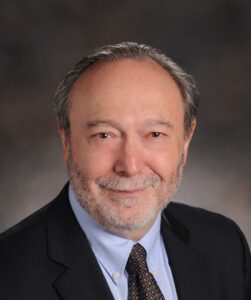
Harnessing the Power of the Vagus Nerve
We have multiple nervous systems. You are probably aware of the nerves that help move your arms to throw a ball or move your legs to jump. No doubt you also know about the fight-or-flight response triggered by a fright. The oddly named sympathetic nervous system is in charge of that. Many of us don’t pay much attention to the parasympathetic nervous system. When it is activated, it promotes a “rest and digest” response. The largest nerve involved in this is the vagus nerve. How can we harness its power?
What Is the Vagus Nerve?
The vagus nerve is surprisingly long. Though it is the tenth cranial nerve, it wanders far from the head and face, connecting the lungs, diaphragm, throat, inner ear and digestive tract together. This pillar of the parasympathetic nervous system influences memories, breathing, relaxation and inflammation.
The Power of the Vagus Nerve:
Because the vagus nerve can tone down inflammation, stimulating it can help reduce pain. The earliest approaches to this required surgical implantation of devices. More recently, however, scientists have been working with noninvasive (or transcutaneous) stimulators that work through the skin. Such devices can help prevent migraines, stop cluster headaches and reduce the severity of an evolving stroke. Moreover, some therapists find transcutaneous vagal stimulation helpful in managing post-traumatic stress disorder (PTSD).
Studies show that it may reduce severe gastroesophageal reflux symptoms (American Journal of Gastroenterology, July 1, 2021). Clinicians are also considering it as a treatment for inflammatory bowel disease (Alimentary Pharmacology & Therapeutics, Oct. 2019). In addition, noninvasive vagal stimulation reduced inflammatory markers of patients with COVID-19 (Frontiers in Neurology, April 8, 2022).
Can You Stimulate the Vagus Nerve Without a Device?
Many well-known practices may actually work, at least in part, through vagal activation. People who practice meditation are probably strengthening the parasympathetic nervous system. Deep breathing exercises, particularly those with an emphasis on exhalation, can also help. Exercise and biofeedback are other routes to improved vagal tone. In addition, avoiding alcohol and following an anti-inflammatory diet are likely to help the parasympathetic system perform as it should.
Beyond that, singing, team sports and practicing coordinated movement with others through dance or play can also be beneficial. One guest plays the clarinet; with its emphasis on exhalation, this stimulates the vagus nerve. So does using a tilt table, which activates baroreceptors that are part of this nervous system.
This Week’s Guests:
Peter Staats, MD, is internationally recognized for his work in inventing, developing, and implementing minimally invasive procedures for pain and neuromodulation. He is currently Chief Medical Officer of National Spine and Pain Centers. Dr. Staats is a leader in vagal stimulation and is one of the founders of electroCore, which was instrumental in getting vagal nerve stimulation approved for emergency use for acute COVID19.
https://www.electrocore.com/aboutus/
Dr. Staats was founder of the Division of Pain Medicine at Johns Hopkins University, where he was the director for 10 years.
https://www.treatingpain.com/about-us/meet-our-leaders/peter-staats-m-d-/

Peter Staats, MD, Chief Medical Officer of National Spine and Pain Centers
Stephen W. Porges, PhD, is Distinguished University Scientist at Indiana University where he is the founding director of the Traumatic Stress Research Consortium and a Professor of Psychiatry at the University of North Carolina. He served as president of the Society for Psychophysiological Research and the Federation of Associations in Behavioral & Brain Sciences and is a former recipient of a National Institute of Mental Health Research Scientist Development Award. Dr. Porges has published more than 400 peer‐reviewed scientific papers across several disciplines that have been cited in more than 50,000 peer-reviewed papers. He holds several patents involved in monitoring and regulating autonomic state. Dr. Porges is the originator of the Polyvagal Theory, a theory that emphasizes the importance of physiological state in the expression of behavioral, mental, and health problems related to traumatic experiences.
Dr. Porges is the author of several books, including his most recent book, Polyvagal Safety: Attachment, Communication, Self-Regulation and a new book with his son, Our Polyvagal World: How Safety and Trauma Change Us, coming out in September.

Stephen Porges
Listen to the Podcast:
The podcast of this program will be available Monday, May 1, 2023, after broadcast on April 29. You can stream the show from this site and download the podcast for free.
Citations
- Zhang B et al, "Integrative effects and vagal mechanisms of transcutaneous electrical acustimulation on gastroesophageal motility in patients with gastroesophageal reflux disease." American Journal of Gastroenterology, July 1, 2021. DOI: 10.14309/ajg.0000000000001203
- Mogilevski T et al, "Review article: the role of the autonomic nervous system in the pathogenesis and therapy of IBD." Alimentary Pharmacology & Therapeutics, Oct. 2019. DOI: 10.1111/apt.15433
- Tornero C et al, "Non-invasive vagus nerve stimulation for COVID-19: Results from a randomized controlled trial (SAVIOR I)." Frontiers in Neurology, April 8, 2022. DOI: 10.3389/fneur.2022.820864

